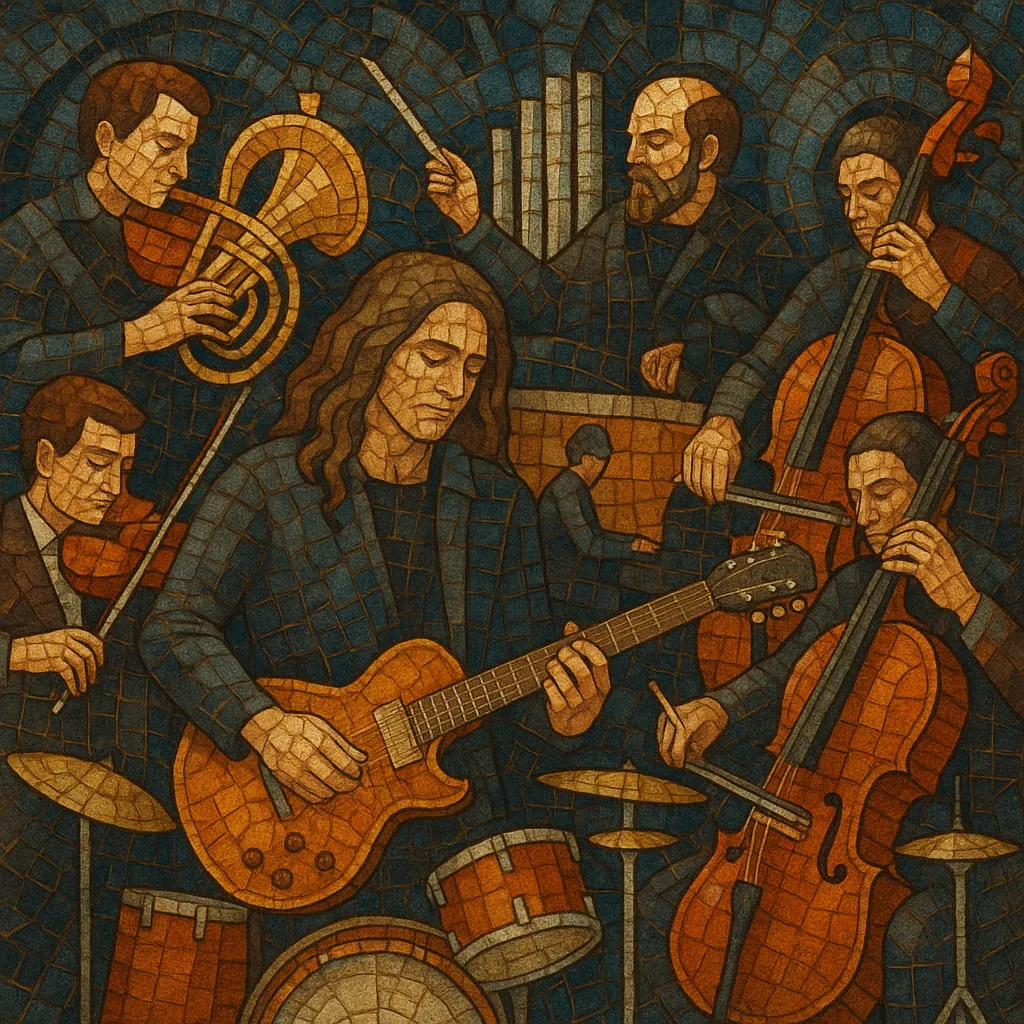
Symphonic rock is a style of rock that integrates orchestral instrumentation, classical forms, and large‑scale arrangements into the core sound of a rock band. Typical timbres include strings, brass, woodwinds, choir, mellotron, Hammond organ, piano, and analog synthesizers supporting guitars, bass, and drums.
The genre emphasizes grand, cinematic dynamics, thematic development, and harmonic richness drawn from Western classical music, while retaining the energy and songcraft of rock. It often overlaps with progressive rock, but places a particular focus on lush orchestration, romantic melodicism, and overtly symphonic textures—ranging from studio overdubs and mellotron layers to fully scored collaborations with symphony orchestras.
Symphonic rock emerged in the United Kingdom during the late 1960s, when rock musicians began to blend the instrumentation and forms of Western classical music with the power and immediacy of rock. Landmark recordings included The Moody Blues' “Days of Future Passed” (1967), which paired a rock band with the London Festival Orchestra, and Procol Harum's Bach‑inflected “A Whiter Shade of Pale” (1967). Deep Purple’s “Concerto for Group and Orchestra” (1969) further legitimized full orchestra–band collaborations.
The 1970s saw symphonic rock flourish, often overlapping with progressive rock. Yes and Genesis pushed longer, multi‑part forms, sophisticated harmony, and expansive arrangements; Renaissance married soaring soprano vocals with classically inspired piano and strings; Electric Light Orchestra made orchestral timbres central to hook‑driven rock. Kansas and Barclay James Harvest carried the style into North America and continental Europe, while solo projects by Rick Wakeman foregrounded grand, programmatic concepts.
Although punk and new wave shifted mainstream tastes in the late 1970s and early 1980s, symphonic rock’s DNA persisted. Neo‑progressive bands drew on its melodic sweep and theatrics, while rock opera projects leveraged its orchestrational language. In metal, its influence helped seed symphonic metal and, later, symphonic strands within black and power metal. Periodic revivals, orchestral tours by classic bands, filmic production trends, and advances in sampling libraries have kept the symphonic rock aesthetic active into the 21st century.

